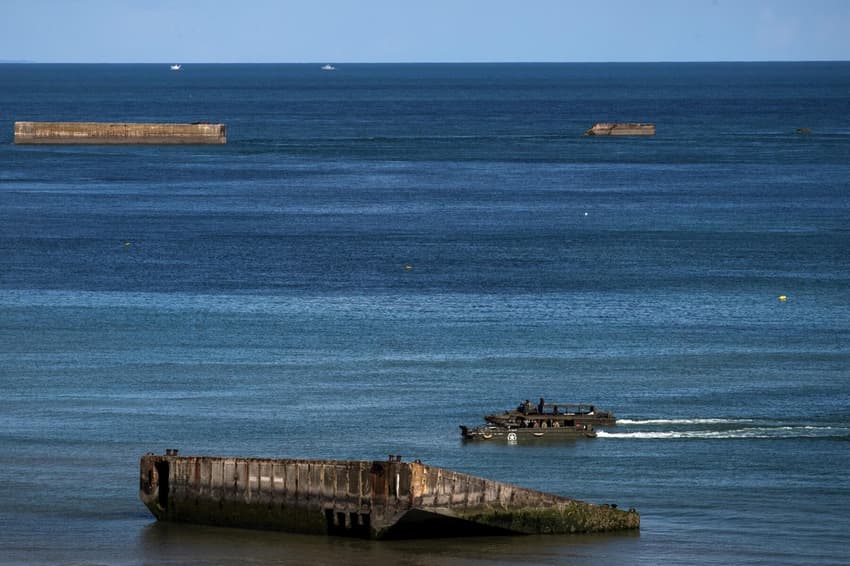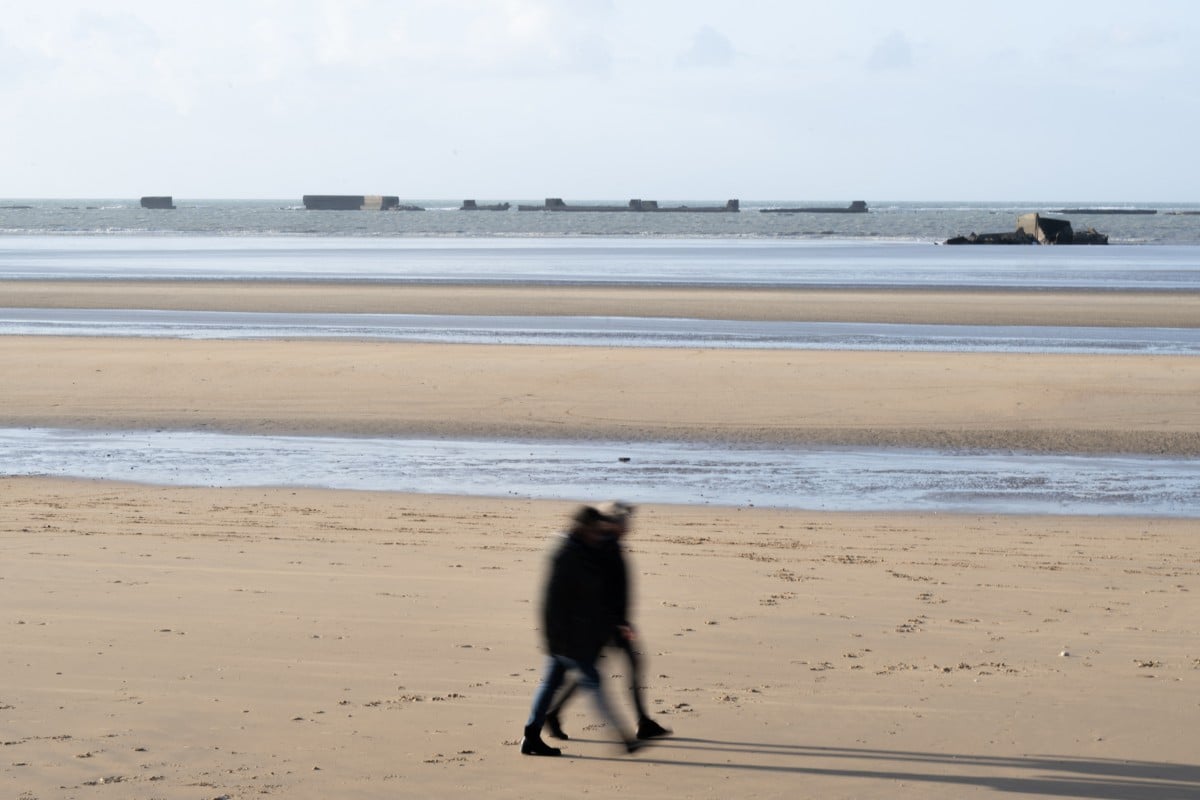Rising sea levels threaten Normandy's historic D-Day beaches

As France prepares to mark the 80th anniversary of the D-Day landings, erosion and rising sea levels are threatening to strip away what remains of the physical history of the Allied invasion of Europe
From Ouistreham (Calvados) to Ravenoville (Manche), the Normandy coastline is littered with relics of June 1944. The Normandy tourism office lists more than 90 official D-Day sites, including 44 museums, drawing millions of visitors every year.
But the sea from where liberation came is now threatening to reclaim its heritage: cliffs and dunes are subject to erosion, while marshes and reclaimed land are at risk of being submerged.
The landscapes today of the famed beaches are nothing like the ones codenamed Utah, Omaha, Gold, Juno and Sword, that the Allied forces endured in 1944, an official for the Conservatoire du Littoral in Normandy told AFP.
The Gold Beach marshes in Ver-sur-Mer, “will be transformed in 10 years or so,” he added, as sea water rises to reclaim land that had been drained in the 18th and 19th centuries.
Mayor of Sainte-Marie-du-Mont and director of the Utah Beach Museum Charles de Vallavieille told Ouest France that “we don’t have the right to do anything” to stop the advance of the sea. “The law protects dykes but not dunes,” he said. “We can’t get any help even though it’s a problem that affects the whole coast – protect one place and the water will go elsewhere”.

Pedestrians walk past remains of the British Artificial harbour at "Gold Beach". (Photo by Lou BENOIST / AFP)
Between the American and British sectors, the Bessin cliffs – where German artillery batteries pummelled the beaches from hard-to-reach areas such as Pointe du Hoc – have been slowly falling to wave impacts, sea salt, freezes and thaws in the decades since 200 American rangers overran the occupying soldiers there.
In 2010, the American Battle Monuments Commission (ABMC), which manages the site, spent $6million to protect it. It “secured the area, [and] consolidated 70 metres [...] with reinforced concrete walls, micropiles to stabilise the soil and a complex network of sensors monitoring the subsoil for any significant movement”.
Coastal pathways in the area have been “set back 20 metres” to ensure public safety, the ABMC has said.
But with sea levels rising a few millimetres a year, inexorably and inevitably changing the face of the coastline, nature is reclaiming the beaches of Normandy, and their blood-stained human history will become a matter of historical interpretation, rather physical fact.
Comments
See Also
From Ouistreham (Calvados) to Ravenoville (Manche), the Normandy coastline is littered with relics of June 1944. The Normandy tourism office lists more than 90 official D-Day sites, including 44 museums, drawing millions of visitors every year.
But the sea from where liberation came is now threatening to reclaim its heritage: cliffs and dunes are subject to erosion, while marshes and reclaimed land are at risk of being submerged.
The landscapes today of the famed beaches are nothing like the ones codenamed Utah, Omaha, Gold, Juno and Sword, that the Allied forces endured in 1944, an official for the Conservatoire du Littoral in Normandy told AFP.
The Gold Beach marshes in Ver-sur-Mer, “will be transformed in 10 years or so,” he added, as sea water rises to reclaim land that had been drained in the 18th and 19th centuries.
Mayor of Sainte-Marie-du-Mont and director of the Utah Beach Museum Charles de Vallavieille told Ouest France that “we don’t have the right to do anything” to stop the advance of the sea. “The law protects dykes but not dunes,” he said. “We can’t get any help even though it’s a problem that affects the whole coast – protect one place and the water will go elsewhere”.

Between the American and British sectors, the Bessin cliffs – where German artillery batteries pummelled the beaches from hard-to-reach areas such as Pointe du Hoc – have been slowly falling to wave impacts, sea salt, freezes and thaws in the decades since 200 American rangers overran the occupying soldiers there.
In 2010, the American Battle Monuments Commission (ABMC), which manages the site, spent $6million to protect it. It “secured the area, [and] consolidated 70 metres [...] with reinforced concrete walls, micropiles to stabilise the soil and a complex network of sensors monitoring the subsoil for any significant movement”.
Coastal pathways in the area have been “set back 20 metres” to ensure public safety, the ABMC has said.
But with sea levels rising a few millimetres a year, inexorably and inevitably changing the face of the coastline, nature is reclaiming the beaches of Normandy, and their blood-stained human history will become a matter of historical interpretation, rather physical fact.
Join the conversation in our comments section below. Share your own views and experience and if you have a question or suggestion for our journalists then email us at [email protected].
Please keep comments civil, constructive and on topic – and make sure to read our terms of use before getting involved.
Please log in here to leave a comment.